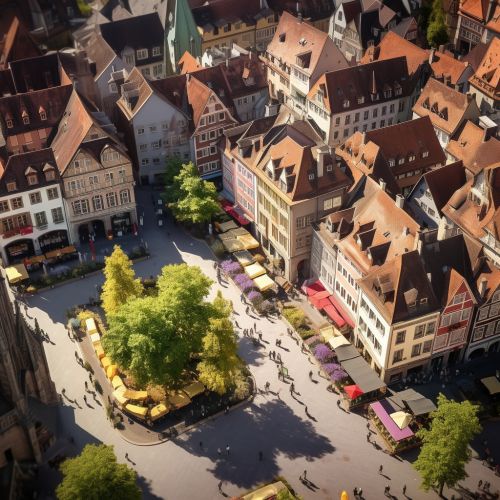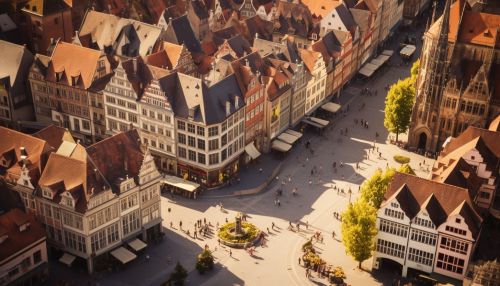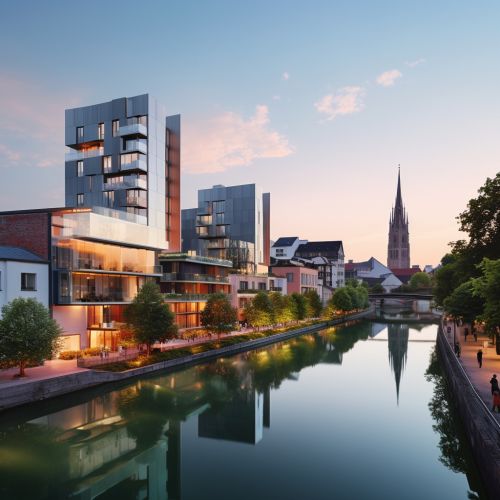Ulm
History
Ulm, a city in the federal German state of Baden-Württemberg, is steeped in history. The city's origins can be traced back to at least 5000 BC, with the discovery of a Neolithic settlement in the vicinity. The city was later settled by the Celts and eventually the Romans, who established a military camp and a fortified town here.


The Middle Ages saw Ulm grow in importance due to its location at the crossroads of important trade routes. The city became a Free Imperial City in 1155, a status it retained until 1802. This period was marked by economic prosperity, with Ulm becoming a hub for trade and craftsmanship. The city's skyline was dominated by the construction of the Ulm Minster, a Gothic cathedral that remains the tallest church in the world today.
The city's fortunes changed in the 19th century, when it was incorporated into the Kingdom of Württemberg. The Industrial Revolution brought about significant changes, with the establishment of factories and the arrival of the railway. The city was heavily damaged during World War II, but has since been rebuilt.
Geography and Climate
Ulm is located on the banks of the River Danube, at an elevation of 479 meters above sea level. The city's topography is characterized by the Swabian Jura, a low mountain range to the south, and the floodplain of the Danube to the north.
The city experiences a temperate seasonal climate, with moderate to heavy rainfall throughout the year. Winters can be cold, with temperatures often dropping below freezing, while summers are typically warm and humid.
Economy
Ulm's economy is diverse and robust, with a strong emphasis on high-tech industries. The city is home to several multinational corporations, including Siemens AG, a global powerhouse in electronics and electrical engineering, and Daimler AG, one of the world's leading automotive companies.
The city is also a center for scientific research and innovation, with the presence of the University of Ulm and several research institutes. The fields of medicine, information technology, and renewable energy are particularly well-represented.


Culture
Ulm has a rich cultural scene, with numerous museums, galleries, and theaters. The city's most famous son is undoubtedly Albert Einstein, the theoretical physicist who developed the theory of relativity. The city celebrates his legacy with the Einstein Museum.
The city's architectural highlight is the Ulm Minster, a masterpiece of Gothic architecture. The city also hosts numerous festivals throughout the year, including the Ulm Volksfest and the International Danube Festival.
Education
Ulm is home to the University of Ulm, a renowned institution specializing in the natural sciences, medicine, and computer science. The city also boasts several vocational schools, offering training in fields such as engineering, business, and healthcare.
